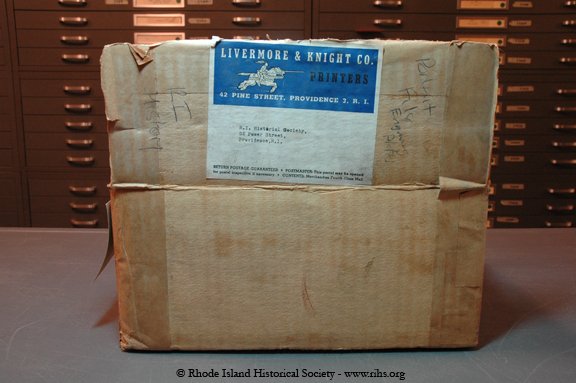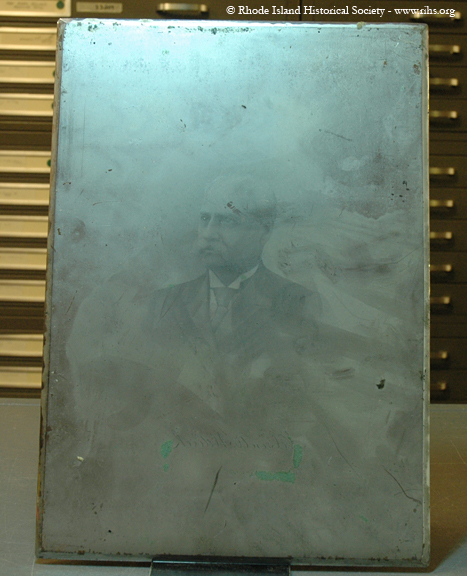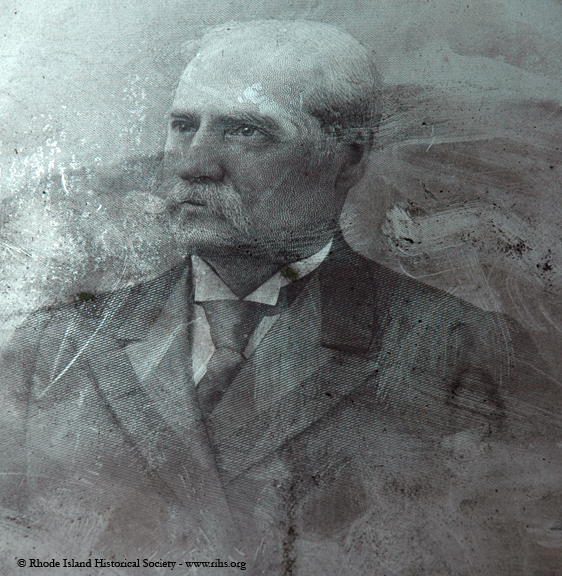In an age of all things digital, this blog post included, I thought I would shine today’s light on a small collection of 19 steel engraving plates that came to us from Livermore & Knight Co. Printers, 42 Pine St., Providence, R.I. sometime between 1942-1974.

Rugg, Henry Warren. History of freemasonry in Rhode Island. (Providence: E.L. Freeman & Son, state printer, 1895)
National biographical publishing co. The Biographical cyclopedia of representative men of Rhode Island. (Providence: National biographical publishing co., 1881),
J.H. Beers & Co. Representative men and old families of Rhode Island; genealogical records and historical sketches of prominent and representative citizens and of many of the old families. (Chicago: J.H. Beers & Co., 1908)
The researcher will notice when they pick up any of the books mentioned, that each engraving has a tissue-guard bound into the book. Tissue-guards are found in fine quality books and were used to protect each plate. This is not something that was done with halftone reproductions as they are generally found in mass produced, lower quality publications such as newspapers and magazines.
Sixteen of the steel plates bear the trademark for John Sellers and Sons of Sheffield, England. Sellers and Sons manufactured not only cutlery and razor blades but also steel and copper plates for engravers. In order to supply the American market, Sellers and Sons opened an office in New York City circa 1840. [a.]
The engravers that created these plates probably procured them through Seller’s New York office. All of the plates, with the exception of two, measure 7”W x 10”H. Three were done by John Angel James Wilcox (1835 – ), an engraver/artist [b.] and four were done by Frederick T. (or I.) Stuart (1837 – 1913) [c.].
Both Wilcox and Stuart were active in the Boston, Massachusetts area with Wilcox working circa 1880 and Stuart working circa 1860. As both Wilcox and Stuart were practicing portrait painters and engravers, the conclusion can be made that each man was responsible for both the painting and the engraving of his subjects’ portrait.


We are pleased to have these plates in our collection to document the history of printing and 19th century book publishing.
Recommended reading
Hunnisett, Basil. 1998. Engraved on steel: the history of picture production using steel plates. Aldershhot, Hants, England: Ashgate.
Gascoigne, Bamber. 2004. How to identify prints: a complete guide to manual and mechanical processes from woodcut to inkjet. New York, N.Y.: Thames & Hudson.
a. Grace’s Guide: http://www.gracesguide.co.uk/John_Sellers_and_Sons (accessed 2013_08_21)
b. John Wilcox – Artist, Art – John Angel James Wilcox. http://www.askart.com/askart/artist.aspx?artist=100326 (accessed 2013_08_21)
c. In: Frederick Stuart – Artist, Art – Frederick T. (or I.) Stuart. http://www.askart.com/askart/s/frederick_t_or_i_stuart/frederick_t_or_i_stuart.aspx (accessed 2013_08_21)

I think I recently found one of these on eBay? http://cgi.ebay.com/ws/eBayISAPI.dll?ViewItem&item=201115177085&ssPageName=STRK:MESE:IT